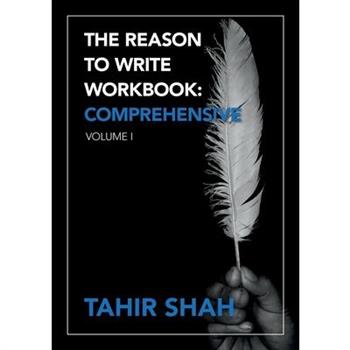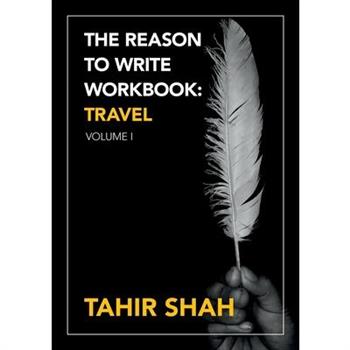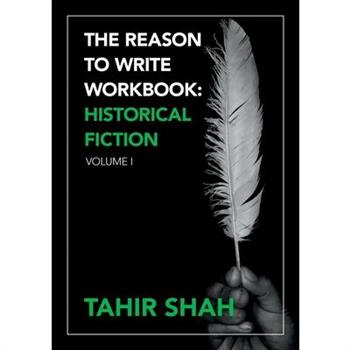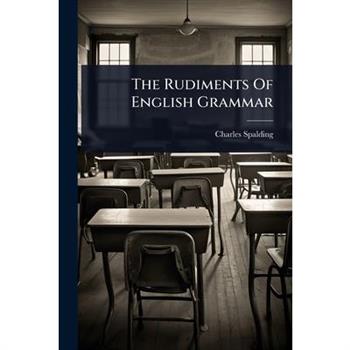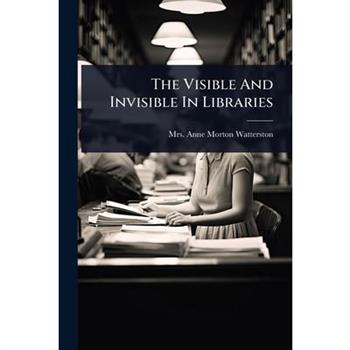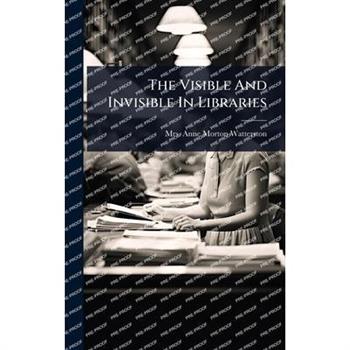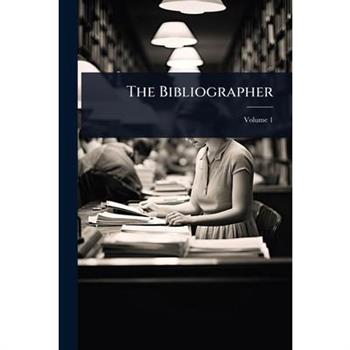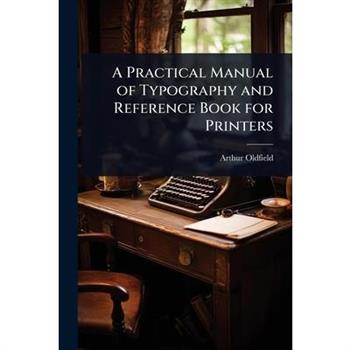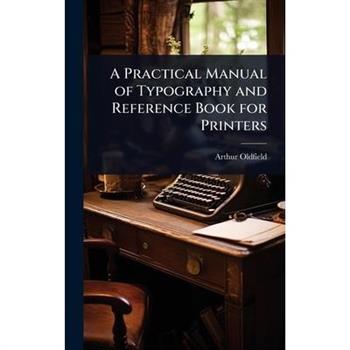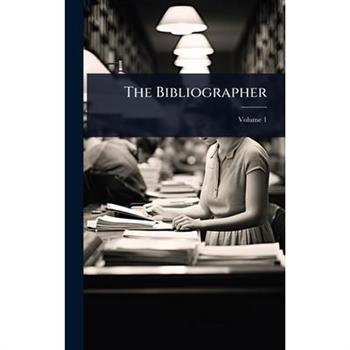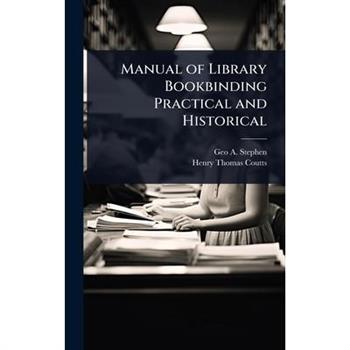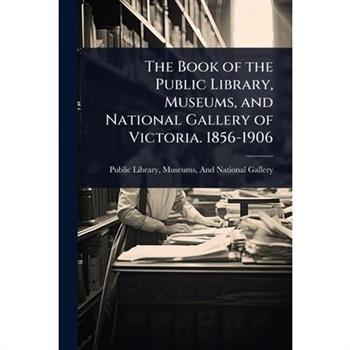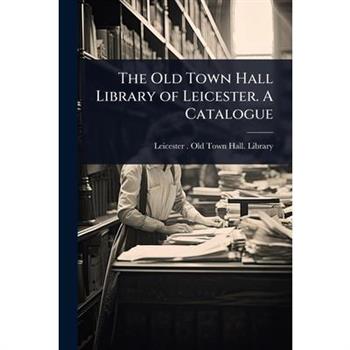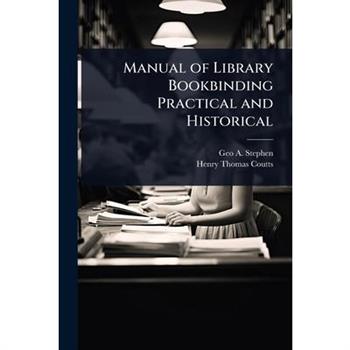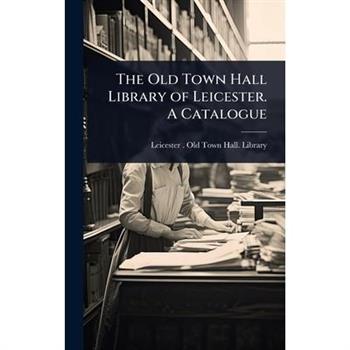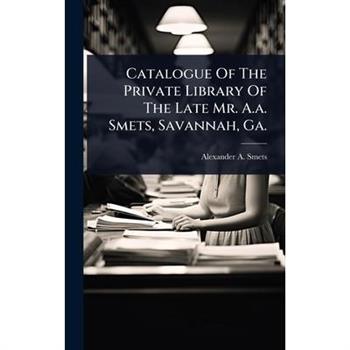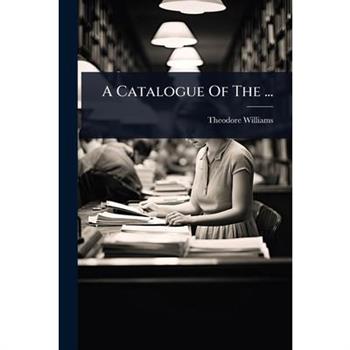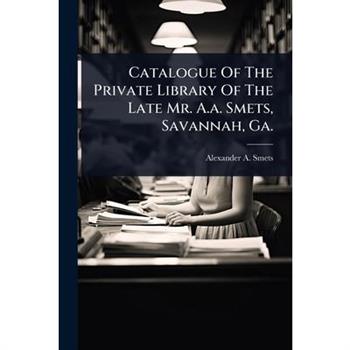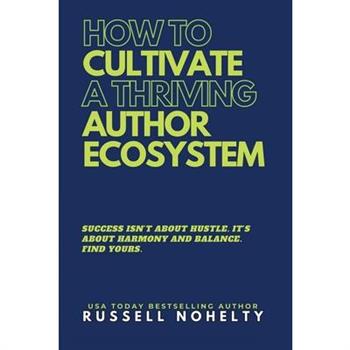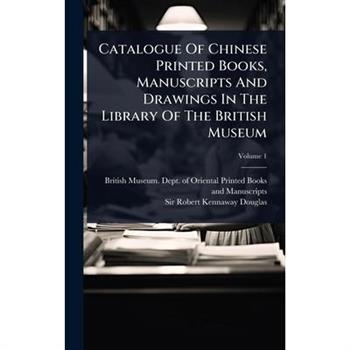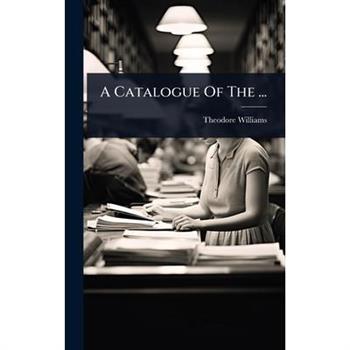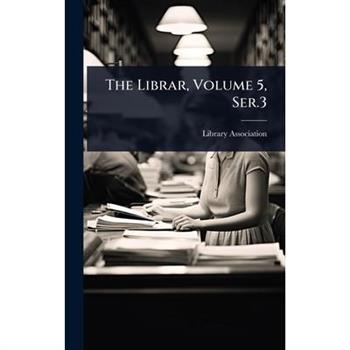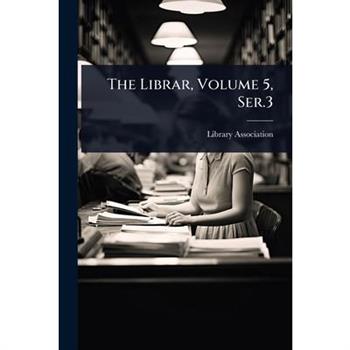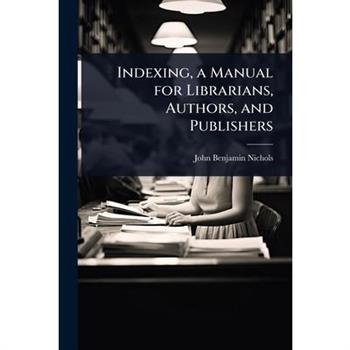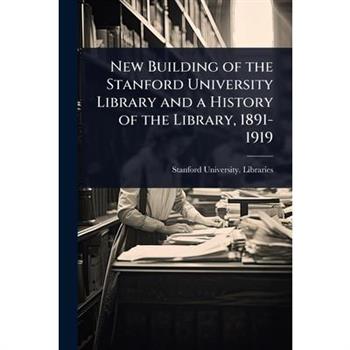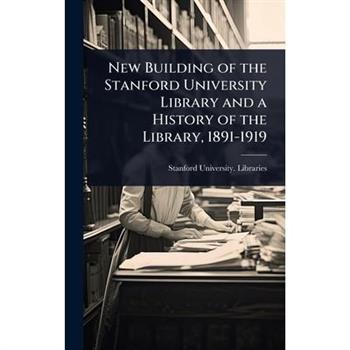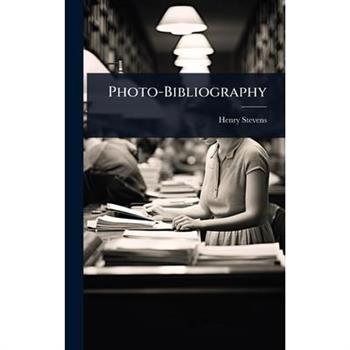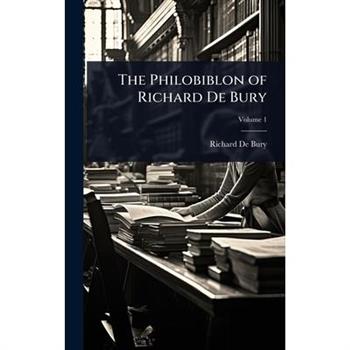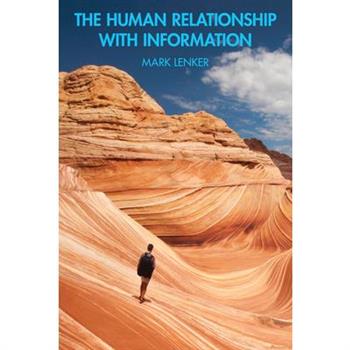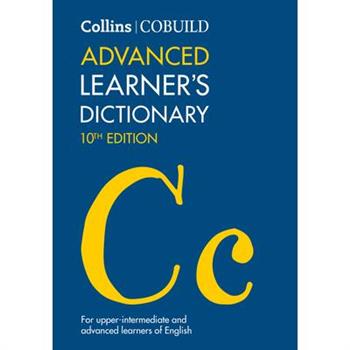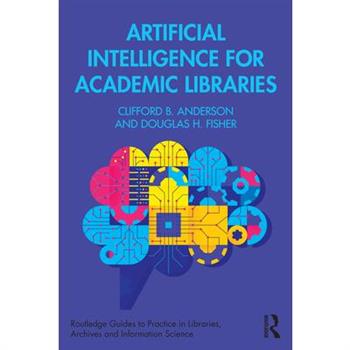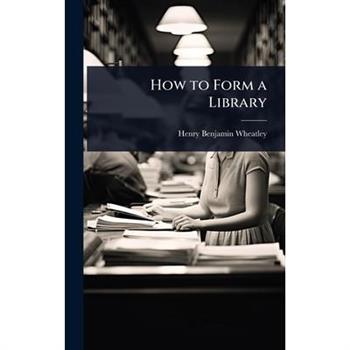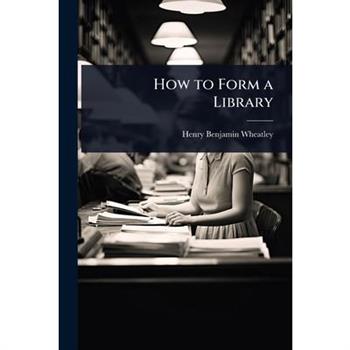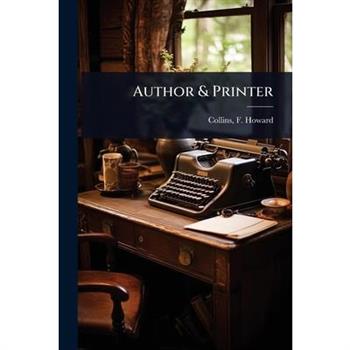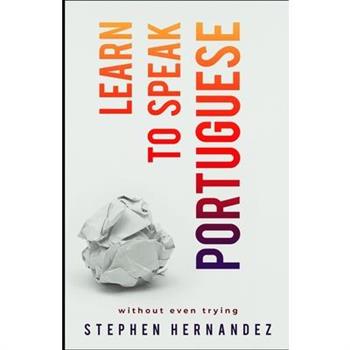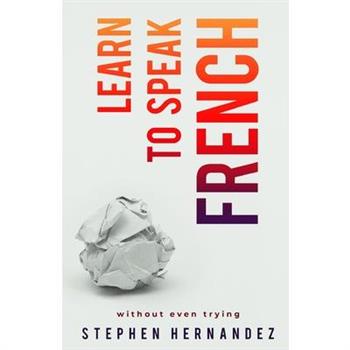The Reason to Write Workbook
Following on from The Reason to Write, Tahir's Shah's acclaimed masterclass on writing, this series of Workbooks provides a boot camp for 'real writers'.Arranged by theme, the Workbooks cover the genres of Travel, Fiction, Historical Fiction, Fantasy, and Teaching Stories, and are designed to work the writing muscle of both new and experienced authors through exercises and repetition.Tahir Shah says in the series introduction: The fact that you are holding this book in your hands tells me that you're a writer.You may not see yourself one... not yet... but you are. Believe in it, really believe, and you're going to find yourself embarking on the most incredible and unexpected journey of your life. First, there's something I'd like you to do...If you're sitting down, get out of the chair, and go into your bathroom.Switch on the light, go over to the mirror, and look at yourself.Don't look at your hair, brow, cheeks, or chin.Look at your eyes.Or, rather, look into your eyes.Push your face up close so you see them and nothing else.Stare into them, and into your soul.While you're staring, greet yourself, calm yourself, and say the following words out loud: I am a writer.I can feel it in my bones.I am ready to embark on the greatest adventure of my life.
The Reason to Write Workbook
Following on from The Reason to Write, Tahir's Shah's acclaimed masterclass on writing, this series of Workbooks provides a boot camp for 'real writers'.Arranged by theme, the Workbooks cover the genres of Travel, Fiction, Historical Fiction, Fantasy, and Teaching Stories, and are designed to work the writing muscle of both new and experienced authors through exercises and repetition.Tahir Shah says in the series introduction: The fact that you are holding this book in your hands tells me that you're a writer.You may not see yourself one... not yet... but you are. Believe in it, really believe, and you're going to find yourself embarking on the most incredible and unexpected journey of your life. First, there's something I'd like you to do...If you're sitting down, get out of the chair, and go into your bathroom.Switch on the light, go over to the mirror, and look at yourself.Don't look at your hair, brow, cheeks, or chin.Look at your eyes.Or, rather, look into your eyes.Push your face up close so you see them and nothing else.Stare into them, and into your soul.While you're staring, greet yourself, calm yourself, and say the following words out loud: I am a writer.I can feel it in my bones.I am ready to embark on the greatest adventure of my life.
The Reason to Write Workbook
Following on from The Reason to Write, Tahir's Shah's acclaimed masterclass on writing, this series of Workbooks provides a boot camp for 'real writers'.Arranged by theme, the Workbooks cover the genres of Travel, Fiction, Historical Fiction, Fantasy, and Teaching Stories, and are designed to work the writing muscle of both new and experienced authors through exercises and repetition.Tahir Shah says in the series introduction: The fact that you are holding this book in your hands tells me that you're a writer.You may not see yourself one... not yet... but you are. Believe in it, really believe, and you're going to find yourself embarking on the most incredible and unexpected journey of your life. First, there's something I'd like you to do...If you're sitting down, get out of the chair, and go into your bathroom.Switch on the light, go over to the mirror, and look at yourself.Don't look at your hair, brow, cheeks, or chin.Look at your eyes.Or, rather, look into your eyes.Push your face up close so you see them and nothing else.Stare into them, and into your soul.While you're staring, greet yourself, calm yourself, and say the following words out loud: I am a writer.I can feel it in my bones.I am ready to embark on the greatest adventure of my life.
The Reason to Write Workbook
Following on from The Reason to Write, Tahir's Shah's acclaimed masterclass on writing, this series of Workbooks provides a boot camp for 'real writers'.Arranged by theme, the Workbooks cover the genres of Travel, Fiction, Historical Fiction, Fantasy, and Teaching Stories, and are designed to work the writing muscle of both new and experienced authors through exercises and repetition.Tahir Shah says in the series introduction: The fact that you are holding this book in your hands tells me that you're a writer.You may not see yourself one... not yet... but you are. Believe in it, really believe, and you're going to find yourself embarking on the most incredible and unexpected journey of your life. First, there's something I'd like you to do...If you're sitting down, get out of the chair, and go into your bathroom.Switch on the light, go over to the mirror, and look at yourself.Don't look at your hair, brow, cheeks, or chin.Look at your eyes.Or, rather, look into your eyes.Push your face up close so you see them and nothing else.Stare into them, and into your soul.While you're staring, greet yourself, calm yourself, and say the following words out loud: I am a writer.I can feel it in my bones.I am ready to embark on the greatest adventure of my life.
Catalogue Of A Collection Of Books Formed By Jame Toovey Principally From The Library Of The Earl Of Gosford
This is a catalogue of a significant collection of books formed by James Toovey, drawn principally from the library of the Earl of Gosford, and subsequently owned by J. Pierpont Morgan. This catalogue provides a detailed overview of the collection, offering invaluable insights into the tastes and collecting habits of these prominent figures. It serves as an important resource for scholars, collectors, and anyone interested in the history of book collecting and the provenance of rare volumes.The catalogue details the books' physical descriptions, and likely contains historical notes about ownership, previous sales, and unique features. This record provides a snapshot of a remarkable library assembled from distinguished sources, making it an essential reference work for those studying the history of libraries and the circulation of rare books within elite circles.This work has been selected by scholars as being culturally important, and is part of the knowledge base of civilization as we know it. This work was reproduced from the original artifact, and remains as true to the original work as possible. Therefore, you will see the original copyright references, library stamps (as most of these works have been housed in our most important libraries around the world), and other notations in the work.This work is in the public domain in the United States of America, and possibly other nations. Within the United States, you may freely copy and distribute this work, as no entity (individual or corporate) has a copyright on the body of the work.As a reproduction of a historical artifact, this work may contain missing or blurred pages, poor pictures, errant marks, etc. Scholars believe, and we concur, that this work is important enough to be preserved, reproduced, and made generally available to the public. We appreciate your support of the preservation process, and thank you for being an important part of keeping this knowledge alive and relevant.
The Rudiments Of English Grammar
"The Rudiments Of English Grammar," by Charles Spalding, offers a comprehensive introduction to the principles of English grammar. Designed to facilitate the pupil's progress, this volume uses parsing lessons to illustrate grammatical concepts and initiates the student into the principles of etymology. The book contains a table of questions on the parts of speech, arranged in systematic order, further aiding comprehension and retention. This classic text remains a valuable resource for those seeking a solid foundation in English grammar.This work has been selected by scholars as being culturally important, and is part of the knowledge base of civilization as we know it. This work was reproduced from the original artifact, and remains as true to the original work as possible. Therefore, you will see the original copyright references, library stamps (as most of these works have been housed in our most important libraries around the world), and other notations in the work.This work is in the public domain in the United States of America, and possibly other nations. Within the United States, you may freely copy and distribute this work, as no entity (individual or corporate) has a copyright on the body of the work.As a reproduction of a historical artifact, this work may contain missing or blurred pages, poor pictures, errant marks, etc. Scholars believe, and we concur, that this work is important enough to be preserved, reproduced, and made generally available to the public. We appreciate your support of the preservation process, and thank you for being an important part of keeping this knowledge alive and relevant.
The Visible And Invisible In Libraries
Delve into the fascinating world of libraries with 'The Visible And Invisible In Libraries' by Mrs. Anne Morton Watterston. This book explores the multifaceted role of libraries, examining not only their visible function as repositories of knowledge but also their invisible impact on communities and individuals. Watterston offers insights into the historical development of libraries, their evolving social roles, and their enduring significance in fostering literacy and intellectual growth. Discover how libraries serve as vital hubs for information access, cultural exchange, and community engagement. Perfect for library enthusiasts, students of library science, and anyone interested in the social and cultural impact of these essential institutions.This work has been selected by scholars as being culturally important, and is part of the knowledge base of civilization as we know it. This work was reproduced from the original artifact, and remains as true to the original work as possible. Therefore, you will see the original copyright references, library stamps (as most of these works have been housed in our most important libraries around the world), and other notations in the work.This work is in the public domain in the United States of America, and possibly other nations. Within the United States, you may freely copy and distribute this work, as no entity (individual or corporate) has a copyright on the body of the work.As a reproduction of a historical artifact, this work may contain missing or blurred pages, poor pictures, errant marks, etc. Scholars believe, and we concur, that this work is important enough to be preserved, reproduced, and made generally available to the public. We appreciate your support of the preservation process, and thank you for being an important part of keeping this knowledge alive and relevant.
The Visible And Invisible In Libraries
Delve into the fascinating world of libraries with 'The Visible And Invisible In Libraries' by Mrs. Anne Morton Watterston. This book explores the multifaceted role of libraries, examining not only their visible function as repositories of knowledge but also their invisible impact on communities and individuals. Watterston offers insights into the historical development of libraries, their evolving social roles, and their enduring significance in fostering literacy and intellectual growth. Discover how libraries serve as vital hubs for information access, cultural exchange, and community engagement. Perfect for library enthusiasts, students of library science, and anyone interested in the social and cultural impact of these essential institutions.This work has been selected by scholars as being culturally important, and is part of the knowledge base of civilization as we know it. This work was reproduced from the original artifact, and remains as true to the original work as possible. Therefore, you will see the original copyright references, library stamps (as most of these works have been housed in our most important libraries around the world), and other notations in the work.This work is in the public domain in the United States of America, and possibly other nations. Within the United States, you may freely copy and distribute this work, as no entity (individual or corporate) has a copyright on the body of the work.As a reproduction of a historical artifact, this work may contain missing or blurred pages, poor pictures, errant marks, etc. Scholars believe, and we concur, that this work is important enough to be preserved, reproduced, and made generally available to the public. We appreciate your support of the preservation process, and thank you for being an important part of keeping this knowledge alive and relevant.
Library Space Planning and Design
Library Space Planning and Design discusses library planning methods to improve academic libraries, learning commons, undergraduate and graduate studies, special collections, and archives. Often, these projects required difficult challenges. For example, how to integrate student success centers or create new learning commons into a library. The book shows how a library plan can be both sustainable and attractive to the users and how to integrate library functions, furniture, and equipment to enhance the learning environment. Case studies from the author's interactions with library staff, stakeholders, and community leadership in the planning process are also included for additional clarity.
The Bibliographer
The Bibliographer, Volume 1, explores the fascinating world of book collecting and bibliography. This volume delves into the intricacies of identifying rare and significant books, offering insights into the history of printing, publishing, and the literary world. It is an invaluable resource for collectors, librarians, and anyone with a passion for the printed word. Readers will discover detailed analyses, historical context, and practical advice for navigating the complexities of the rare book market. Whether you are a seasoned bibliophile or just beginning your journey into the world of book collecting, this volume promises to enlighten and entertain.This work has been selected by scholars as being culturally important, and is part of the knowledge base of civilization as we know it. This work was reproduced from the original artifact, and remains as true to the original work as possible. Therefore, you will see the original copyright references, library stamps (as most of these works have been housed in our most important libraries around the world), and other notations in the work.This work is in the public domain in the United States of America, and possibly other nations. Within the United States, you may freely copy and distribute this work, as no entity (individual or corporate) has a copyright on the body of the work.As a reproduction of a historical artifact, this work may contain missing or blurred pages, poor pictures, errant marks, etc. Scholars believe, and we concur, that this work is important enough to be preserved, reproduced, and made generally available to the public. We appreciate your support of the preservation process, and thank you for being an important part of keeping this knowledge alive and relevant.
A Practical Manual of Typography and Reference Book for Printers
"A Practical Manual of Typography and Reference Book for Printers" by Arthur Oldfield is a comprehensive guide designed for both novice and experienced printers and graphic designers. This manual provides detailed insights into the art and science of typography, covering various aspects from typesetting to layout design. Explore the intricacies of font selection, spacing, and arrangement, ensuring visually appealing and effective printed materials.Originally published to assist those in the printing trade, this edition retains the original content, making it an invaluable resource for understanding traditional printing techniques while also offering foundational knowledge applicable to modern digital design. Whether you are a student, a professional, or simply an enthusiast, this book serves as an essential reference to elevate your typographic skills and enhance your understanding of the printing process.This work has been selected by scholars as being culturally important, and is part of the knowledge base of civilization as we know it. This work was reproduced from the original artifact, and remains as true to the original work as possible. Therefore, you will see the original copyright references, library stamps (as most of these works have been housed in our most important libraries around the world), and other notations in the work.This work is in the public domain in the United States of America, and possibly other nations. Within the United States, you may freely copy and distribute this work, as no entity (individual or corporate) has a copyright on the body of the work.As a reproduction of a historical artifact, this work may contain missing or blurred pages, poor pictures, errant marks, etc. Scholars believe, and we concur, that this work is important enough to be preserved, reproduced, and made generally available to the public. We appreciate your support of the preservation process, and thank you for being an important part of keeping this knowledge alive and relevant.
A Practical Manual of Typography and Reference Book for Printers
"A Practical Manual of Typography and Reference Book for Printers" by Arthur Oldfield is a comprehensive guide designed for both novice and experienced printers and graphic designers. This manual provides detailed insights into the art and science of typography, covering various aspects from typesetting to layout design. Explore the intricacies of font selection, spacing, and arrangement, ensuring visually appealing and effective printed materials.Originally published to assist those in the printing trade, this edition retains the original content, making it an invaluable resource for understanding traditional printing techniques while also offering foundational knowledge applicable to modern digital design. Whether you are a student, a professional, or simply an enthusiast, this book serves as an essential reference to elevate your typographic skills and enhance your understanding of the printing process.This work has been selected by scholars as being culturally important, and is part of the knowledge base of civilization as we know it. This work was reproduced from the original artifact, and remains as true to the original work as possible. Therefore, you will see the original copyright references, library stamps (as most of these works have been housed in our most important libraries around the world), and other notations in the work.This work is in the public domain in the United States of America, and possibly other nations. Within the United States, you may freely copy and distribute this work, as no entity (individual or corporate) has a copyright on the body of the work.As a reproduction of a historical artifact, this work may contain missing or blurred pages, poor pictures, errant marks, etc. Scholars believe, and we concur, that this work is important enough to be preserved, reproduced, and made generally available to the public. We appreciate your support of the preservation process, and thank you for being an important part of keeping this knowledge alive and relevant.
The Bibliographer
The Bibliographer, Volume 1, explores the fascinating world of book collecting and bibliography. This volume delves into the intricacies of identifying rare and significant books, offering insights into the history of printing, publishing, and the literary world. It is an invaluable resource for collectors, librarians, and anyone with a passion for the printed word. Readers will discover detailed analyses, historical context, and practical advice for navigating the complexities of the rare book market. Whether you are a seasoned bibliophile or just beginning your journey into the world of book collecting, this volume promises to enlighten and entertain.This work has been selected by scholars as being culturally important, and is part of the knowledge base of civilization as we know it. This work was reproduced from the original artifact, and remains as true to the original work as possible. Therefore, you will see the original copyright references, library stamps (as most of these works have been housed in our most important libraries around the world), and other notations in the work.This work is in the public domain in the United States of America, and possibly other nations. Within the United States, you may freely copy and distribute this work, as no entity (individual or corporate) has a copyright on the body of the work.As a reproduction of a historical artifact, this work may contain missing or blurred pages, poor pictures, errant marks, etc. Scholars believe, and we concur, that this work is important enough to be preserved, reproduced, and made generally available to the public. We appreciate your support of the preservation process, and thank you for being an important part of keeping this knowledge alive and relevant.
Manual of Library Bookbinding Practical and Historical
"Manual of Library Bookbinding Practical and Historical" offers a comprehensive exploration of the art and science of bookbinding. Originally published in 1911, this manual provides practical instruction on the techniques used to bind and preserve books. The book covers a range of topics, from the selection of materials to the execution of various binding methods. Authored by Geo A. Stephen and Henry Thomas Coutts, this volume is invaluable for librarians, archivists, and book collectors seeking to understand and implement effective book preservation strategies. It serves as a historical record of early 20th-century bookbinding practices and remains relevant for those interested in the craft's evolution.This work has been selected by scholars as being culturally important, and is part of the knowledge base of civilization as we know it. This work was reproduced from the original artifact, and remains as true to the original work as possible. Therefore, you will see the original copyright references, library stamps (as most of these works have been housed in our most important libraries around the world), and other notations in the work.This work is in the public domain in the United States of America, and possibly other nations. Within the United States, you may freely copy and distribute this work, as no entity (individual or corporate) has a copyright on the body of the work.As a reproduction of a historical artifact, this work may contain missing or blurred pages, poor pictures, errant marks, etc. Scholars believe, and we concur, that this work is important enough to be preserved, reproduced, and made generally available to the public. We appreciate your support of the preservation process, and thank you for being an important part of keeping this knowledge alive and relevant.
The Book of the Public Library, Museums, and National Gallery of Victoria. 1856-1906
The Book of the Public Library, Museums, and National Gallery of Victoria. 1856-1906 offers a detailed historical overview of these significant cultural institutions during their formative years. This volume chronicles the establishment and growth of the Public Library of Victoria, Museums, and the National Gallery, highlighting their contributions to the intellectual and artistic life of the Australian state. The book covers a range of topics, including the acquisition of collections, the construction of iconic buildings, and the key figures who shaped these institutions. It provides insights into the challenges and triumphs of creating and maintaining a public library, museums, and art gallery in a rapidly developing society. With rich historical detail, this book serves as an invaluable resource for researchers, historians, and anyone interested in the cultural heritage of Victoria and the evolution of its public institutions.This work has been selected by scholars as being culturally important, and is part of the knowledge base of civilization as we know it. This work was reproduced from the original artifact, and remains as true to the original work as possible. Therefore, you will see the original copyright references, library stamps (as most of these works have been housed in our most important libraries around the world), and other notations in the work.This work is in the public domain in the United States of America, and possibly other nations. Within the United States, you may freely copy and distribute this work, as no entity (individual or corporate) has a copyright on the body of the work.As a reproduction of a historical artifact, this work may contain missing or blurred pages, poor pictures, errant marks, etc. Scholars believe, and we concur, that this work is important enough to be preserved, reproduced, and made generally available to the public. We appreciate your support of the preservation process, and thank you for being an important part of keeping this knowledge alive and relevant.
The Book of the Public Library, Museums, and National Gallery of Victoria. 1856-1906
The Book of the Public Library, Museums, and National Gallery of Victoria. 1856-1906 offers a detailed historical overview of these significant cultural institutions during their formative years. This volume chronicles the establishment and growth of the Public Library of Victoria, Museums, and the National Gallery, highlighting their contributions to the intellectual and artistic life of the Australian state. The book covers a range of topics, including the acquisition of collections, the construction of iconic buildings, and the key figures who shaped these institutions. It provides insights into the challenges and triumphs of creating and maintaining a public library, museums, and art gallery in a rapidly developing society. With rich historical detail, this book serves as an invaluable resource for researchers, historians, and anyone interested in the cultural heritage of Victoria and the evolution of its public institutions.This work has been selected by scholars as being culturally important, and is part of the knowledge base of civilization as we know it. This work was reproduced from the original artifact, and remains as true to the original work as possible. Therefore, you will see the original copyright references, library stamps (as most of these works have been housed in our most important libraries around the world), and other notations in the work.This work is in the public domain in the United States of America, and possibly other nations. Within the United States, you may freely copy and distribute this work, as no entity (individual or corporate) has a copyright on the body of the work.As a reproduction of a historical artifact, this work may contain missing or blurred pages, poor pictures, errant marks, etc. Scholars believe, and we concur, that this work is important enough to be preserved, reproduced, and made generally available to the public. We appreciate your support of the preservation process, and thank you for being an important part of keeping this knowledge alive and relevant.
The Old Town Hall Library of Leicester. A Catalogue
The Old Town Hall Library of Leicester. A Catalogue offers a detailed glimpse into the historical collection of the Old Town Hall Library in Leicester, England. Published in 1919, this catalogue provides a comprehensive listing of the library's holdings, reflecting the literary and intellectual interests of the period. Researchers and historians will find valuable insights into the types of books that were considered important and accessible to the public in Leicester during the early 20th century. This catalogue serves as a crucial resource for understanding the cultural landscape and the evolution of libraries in Britain. It preserves a record of literary tastes, historical knowledge, and scholarly pursuits that shaped the community of Leicester.This work has been selected by scholars as being culturally important, and is part of the knowledge base of civilization as we know it. This work was reproduced from the original artifact, and remains as true to the original work as possible. Therefore, you will see the original copyright references, library stamps (as most of these works have been housed in our most important libraries around the world), and other notations in the work.This work is in the public domain in the United States of America, and possibly other nations. Within the United States, you may freely copy and distribute this work, as no entity (individual or corporate) has a copyright on the body of the work.As a reproduction of a historical artifact, this work may contain missing or blurred pages, poor pictures, errant marks, etc. Scholars believe, and we concur, that this work is important enough to be preserved, reproduced, and made generally available to the public. We appreciate your support of the preservation process, and thank you for being an important part of keeping this knowledge alive and relevant.
Manual of Library Bookbinding Practical and Historical
"Manual of Library Bookbinding Practical and Historical" offers a comprehensive exploration of the art and science of bookbinding. Originally published in 1911, this manual provides practical instruction on the techniques used to bind and preserve books. The book covers a range of topics, from the selection of materials to the execution of various binding methods. Authored by Geo A. Stephen and Henry Thomas Coutts, this volume is invaluable for librarians, archivists, and book collectors seeking to understand and implement effective book preservation strategies. It serves as a historical record of early 20th-century bookbinding practices and remains relevant for those interested in the craft's evolution.This work has been selected by scholars as being culturally important, and is part of the knowledge base of civilization as we know it. This work was reproduced from the original artifact, and remains as true to the original work as possible. Therefore, you will see the original copyright references, library stamps (as most of these works have been housed in our most important libraries around the world), and other notations in the work.This work is in the public domain in the United States of America, and possibly other nations. Within the United States, you may freely copy and distribute this work, as no entity (individual or corporate) has a copyright on the body of the work.As a reproduction of a historical artifact, this work may contain missing or blurred pages, poor pictures, errant marks, etc. Scholars believe, and we concur, that this work is important enough to be preserved, reproduced, and made generally available to the public. We appreciate your support of the preservation process, and thank you for being an important part of keeping this knowledge alive and relevant.
The Old Town Hall Library of Leicester. A Catalogue
The Old Town Hall Library of Leicester. A Catalogue offers a detailed glimpse into the historical collection of the Old Town Hall Library in Leicester, England. Published in 1919, this catalogue provides a comprehensive listing of the library's holdings, reflecting the literary and intellectual interests of the period. Researchers and historians will find valuable insights into the types of books that were considered important and accessible to the public in Leicester during the early 20th century. This catalogue serves as a crucial resource for understanding the cultural landscape and the evolution of libraries in Britain. It preserves a record of literary tastes, historical knowledge, and scholarly pursuits that shaped the community of Leicester.This work has been selected by scholars as being culturally important, and is part of the knowledge base of civilization as we know it. This work was reproduced from the original artifact, and remains as true to the original work as possible. Therefore, you will see the original copyright references, library stamps (as most of these works have been housed in our most important libraries around the world), and other notations in the work.This work is in the public domain in the United States of America, and possibly other nations. Within the United States, you may freely copy and distribute this work, as no entity (individual or corporate) has a copyright on the body of the work.As a reproduction of a historical artifact, this work may contain missing or blurred pages, poor pictures, errant marks, etc. Scholars believe, and we concur, that this work is important enough to be preserved, reproduced, and made generally available to the public. We appreciate your support of the preservation process, and thank you for being an important part of keeping this knowledge alive and relevant.
Catalogue Of The Private Library Of The Late Mr. A.a. Smets, Savannah, Ga.
This is a meticulously compiled catalogue of the extensive private library belonging to the late Mr. A.A. Smets of Savannah, Georgia. Offering a glimpse into the literary tastes and intellectual pursuits of a prominent collector, this catalogue provides a detailed listing of books spanning various subjects. It serves as an invaluable resource for bibliographers, historians, and collectors interested in the history of private libraries and the cultural landscape of 19th-century America. The catalogue offers insights into the collecting habits and the intellectual environment of the time. This historic record allows researchers to trace the provenance of rare books and understand the development of American libraries. A fascinating glimpse into a bygone era of book collecting and scholarly pursuit.This work has been selected by scholars as being culturally important, and is part of the knowledge base of civilization as we know it. This work was reproduced from the original artifact, and remains as true to the original work as possible. Therefore, you will see the original copyright references, library stamps (as most of these works have been housed in our most important libraries around the world), and other notations in the work.This work is in the public domain in the United States of America, and possibly other nations. Within the United States, you may freely copy and distribute this work, as no entity (individual or corporate) has a copyright on the body of the work.As a reproduction of a historical artifact, this work may contain missing or blurred pages, poor pictures, errant marks, etc. Scholars believe, and we concur, that this work is important enough to be preserved, reproduced, and made generally available to the public. We appreciate your support of the preservation process, and thank you for being an important part of keeping this knowledge alive and relevant.
A Catalogue Of The ...
This meticulously compiled catalogue offers a fascinating glimpse into the esteemed library of the Rev. Theodore Williams. A treasure trove for bibliophiles and historians alike, "A Catalogue Of The ... Library Of The Rev. Theodore Williams" provides a detailed listing of the reverend's extensive collection.Offering insight into the literary tastes and intellectual pursuits of a prominent figure, this catalogue serves as a valuable resource for researchers and collectors interested in rare books, historical texts, and the history of book collecting. Explore the breadth and depth of a remarkable private library from a bygone era.This work has been selected by scholars as being culturally important, and is part of the knowledge base of civilization as we know it. This work was reproduced from the original artifact, and remains as true to the original work as possible. Therefore, you will see the original copyright references, library stamps (as most of these works have been housed in our most important libraries around the world), and other notations in the work.This work is in the public domain in the United States of America, and possibly other nations. Within the United States, you may freely copy and distribute this work, as no entity (individual or corporate) has a copyright on the body of the work.As a reproduction of a historical artifact, this work may contain missing or blurred pages, poor pictures, errant marks, etc. Scholars believe, and we concur, that this work is important enough to be preserved, reproduced, and made generally available to the public. We appreciate your support of the preservation process, and thank you for being an important part of keeping this knowledge alive and relevant.
Catalogue Of The Private Library Of The Late Mr. A.a. Smets, Savannah, Ga.
This is a meticulously compiled catalogue of the extensive private library belonging to the late Mr. A.A. Smets of Savannah, Georgia. Offering a glimpse into the literary tastes and intellectual pursuits of a prominent collector, this catalogue provides a detailed listing of books spanning various subjects. It serves as an invaluable resource for bibliographers, historians, and collectors interested in the history of private libraries and the cultural landscape of 19th-century America. The catalogue offers insights into the collecting habits and the intellectual environment of the time. This historic record allows researchers to trace the provenance of rare books and understand the development of American libraries. A fascinating glimpse into a bygone era of book collecting and scholarly pursuit.This work has been selected by scholars as being culturally important, and is part of the knowledge base of civilization as we know it. This work was reproduced from the original artifact, and remains as true to the original work as possible. Therefore, you will see the original copyright references, library stamps (as most of these works have been housed in our most important libraries around the world), and other notations in the work.This work is in the public domain in the United States of America, and possibly other nations. Within the United States, you may freely copy and distribute this work, as no entity (individual or corporate) has a copyright on the body of the work.As a reproduction of a historical artifact, this work may contain missing or blurred pages, poor pictures, errant marks, etc. Scholars believe, and we concur, that this work is important enough to be preserved, reproduced, and made generally available to the public. We appreciate your support of the preservation process, and thank you for being an important part of keeping this knowledge alive and relevant.
Catalogue Of Chinese Printed Books, Manuscripts And Drawings In The Library Of The British Museum
This is Volume 1 of the "Catalogue Of Chinese Printed Books, Manuscripts And Drawings In The Library Of The British Museum", a comprehensive guide to the British Museum's extensive collection. Compiled by the Department of Oriental Printed Books and Manuscripts, under the direction of Sir Robert Kennaway Douglas, this catalogue provides invaluable insights into the breadth and depth of Chinese literature and art held within the museum's archives. Researchers, historians, and bibliophiles alike will find this volume an essential resource for navigating the rich tapestry of Chinese cultural heritage. From meticulously detailed descriptions of printed books to annotations on rare manuscripts and drawings, this catalogue offers a window into the historical and artistic achievements of China as represented in one of the world's foremost collections. A must-have reference for any serious scholar of Chinese studies.This work has been selected by scholars as being culturally important, and is part of the knowledge base of civilization as we know it. This work was reproduced from the original artifact, and remains as true to the original work as possible. Therefore, you will see the original copyright references, library stamps (as most of these works have been housed in our most important libraries around the world), and other notations in the work.This work is in the public domain in the United States of America, and possibly other nations. Within the United States, you may freely copy and distribute this work, as no entity (individual or corporate) has a copyright on the body of the work.As a reproduction of a historical artifact, this work may contain missing or blurred pages, poor pictures, errant marks, etc. Scholars believe, and we concur, that this work is important enough to be preserved, reproduced, and made generally available to the public. We appreciate your support of the preservation process, and thank you for being an important part of keeping this knowledge alive and relevant.
Catalogue Of Chinese Printed Books, Manuscripts And Drawings In The Library Of The British Museum
This is Volume 1 of the "Catalogue Of Chinese Printed Books, Manuscripts And Drawings In The Library Of The British Museum", a comprehensive guide to the British Museum's extensive collection. Compiled by the Department of Oriental Printed Books and Manuscripts, under the direction of Sir Robert Kennaway Douglas, this catalogue provides invaluable insights into the breadth and depth of Chinese literature and art held within the museum's archives. Researchers, historians, and bibliophiles alike will find this volume an essential resource for navigating the rich tapestry of Chinese cultural heritage. From meticulously detailed descriptions of printed books to annotations on rare manuscripts and drawings, this catalogue offers a window into the historical and artistic achievements of China as represented in one of the world's foremost collections. A must-have reference for any serious scholar of Chinese studies.This work has been selected by scholars as being culturally important, and is part of the knowledge base of civilization as we know it. This work was reproduced from the original artifact, and remains as true to the original work as possible. Therefore, you will see the original copyright references, library stamps (as most of these works have been housed in our most important libraries around the world), and other notations in the work.This work is in the public domain in the United States of America, and possibly other nations. Within the United States, you may freely copy and distribute this work, as no entity (individual or corporate) has a copyright on the body of the work.As a reproduction of a historical artifact, this work may contain missing or blurred pages, poor pictures, errant marks, etc. Scholars believe, and we concur, that this work is important enough to be preserved, reproduced, and made generally available to the public. We appreciate your support of the preservation process, and thank you for being an important part of keeping this knowledge alive and relevant.
A Catalogue Of The ...
This meticulously compiled catalogue offers a fascinating glimpse into the esteemed library of the Rev. Theodore Williams. A treasure trove for bibliophiles and historians alike, "A Catalogue Of The ... Library Of The Rev. Theodore Williams" provides a detailed listing of the reverend's extensive collection.Offering insight into the literary tastes and intellectual pursuits of a prominent figure, this catalogue serves as a valuable resource for researchers and collectors interested in rare books, historical texts, and the history of book collecting. Explore the breadth and depth of a remarkable private library from a bygone era.This work has been selected by scholars as being culturally important, and is part of the knowledge base of civilization as we know it. This work was reproduced from the original artifact, and remains as true to the original work as possible. Therefore, you will see the original copyright references, library stamps (as most of these works have been housed in our most important libraries around the world), and other notations in the work.This work is in the public domain in the United States of America, and possibly other nations. Within the United States, you may freely copy and distribute this work, as no entity (individual or corporate) has a copyright on the body of the work.As a reproduction of a historical artifact, this work may contain missing or blurred pages, poor pictures, errant marks, etc. Scholars believe, and we concur, that this work is important enough to be preserved, reproduced, and made generally available to the public. We appreciate your support of the preservation process, and thank you for being an important part of keeping this knowledge alive and relevant.
The Librar, Volume 5, Ser.3
"The Librar, Volume 5, Ser.3" presents a collection of articles and insights relevant to library and information science. Published under the auspices of the Library Association, this volume offers valuable perspectives on the evolving landscape of librarianship. Explore topics ranging from information management and library theory to practical applications in various library settings. This compilation serves as a resource for professionals and students seeking to stay informed about current trends and foundational principles in the field.This work has been selected by scholars as being culturally important, and is part of the knowledge base of civilization as we know it. This work was reproduced from the original artifact, and remains as true to the original work as possible. Therefore, you will see the original copyright references, library stamps (as most of these works have been housed in our most important libraries around the world), and other notations in the work.This work is in the public domain in the United States of America, and possibly other nations. Within the United States, you may freely copy and distribute this work, as no entity (individual or corporate) has a copyright on the body of the work.As a reproduction of a historical artifact, this work may contain missing or blurred pages, poor pictures, errant marks, etc. Scholars believe, and we concur, that this work is important enough to be preserved, reproduced, and made generally available to the public. We appreciate your support of the preservation process, and thank you for being an important part of keeping this knowledge alive and relevant.
The Librar, Volume 5, Ser.3
"The Librar, Volume 5, Ser.3" presents a collection of articles and insights relevant to library and information science. Published under the auspices of the Library Association, this volume offers valuable perspectives on the evolving landscape of librarianship. Explore topics ranging from information management and library theory to practical applications in various library settings. This compilation serves as a resource for professionals and students seeking to stay informed about current trends and foundational principles in the field.This work has been selected by scholars as being culturally important, and is part of the knowledge base of civilization as we know it. This work was reproduced from the original artifact, and remains as true to the original work as possible. Therefore, you will see the original copyright references, library stamps (as most of these works have been housed in our most important libraries around the world), and other notations in the work.This work is in the public domain in the United States of America, and possibly other nations. Within the United States, you may freely copy and distribute this work, as no entity (individual or corporate) has a copyright on the body of the work.As a reproduction of a historical artifact, this work may contain missing or blurred pages, poor pictures, errant marks, etc. Scholars believe, and we concur, that this work is important enough to be preserved, reproduced, and made generally available to the public. We appreciate your support of the preservation process, and thank you for being an important part of keeping this knowledge alive and relevant.
Indexing, a Manual for Librarians, Authors, and Publishers
"Indexing, a Manual for Librarians, Authors, and Publishers" by John Benjamin Nichols, originally published in 1892, remains a valuable resource for those engaged in the organization and retrieval of information. This comprehensive guide provides practical advice on creating effective indexes, covering principles applicable across various types of documents and publications. It serves as an essential reference for librarians seeking to improve access to their collections, authors aiming to enhance the usability of their books, and publishers striving for quality and reader satisfaction.Nichols' manual addresses the core aspects of indexing, from selecting appropriate terms to arranging entries logically. Its enduring relevance lies in its focus on the fundamental concepts that underpin successful indexing, making it a useful tool for anyone involved in information management, even in the digital age. This edition preserves the original insights while offering a glimpse into the historical context of information science.This work has been selected by scholars as being culturally important, and is part of the knowledge base of civilization as we know it. This work was reproduced from the original artifact, and remains as true to the original work as possible. Therefore, you will see the original copyright references, library stamps (as most of these works have been housed in our most important libraries around the world), and other notations in the work.This work is in the public domain in the United States of America, and possibly other nations. Within the United States, you may freely copy and distribute this work, as no entity (individual or corporate) has a copyright on the body of the work.As a reproduction of a historical artifact, this work may contain missing or blurred pages, poor pictures, errant marks, etc. Scholars believe, and we concur, that this work is important enough to be preserved, reproduced, and made generally available to the public. We appreciate your support of the preservation process, and thank you for being an important part of keeping this knowledge alive and relevant.
Photo-Bibliography
Photo-Bibliography by Henry Stevens explores the creation and utility of printed card catalogues, particularly for old, rare, beautiful, and costly books. Stevens advocates for a cooperative system among libraries to facilitate the creation of such catalogues, enhancing accessibility and scholarship. The book also discusses the establishment of a central bibliographical bureau or clearing-house for librarians, envisioning a collaborative network to streamline information sharing and resource management within the library community. This proposal reflects a forward-thinking approach to library science in the late 19th century, emphasizing the importance of standardization and cooperation in managing and disseminating knowledge. Stevens' work offers insights into the historical development of bibliographic practices and the evolving role of libraries as centers of learning and research.This work has been selected by scholars as being culturally important, and is part of the knowledge base of civilization as we know it. This work was reproduced from the original artifact, and remains as true to the original work as possible. Therefore, you will see the original copyright references, library stamps (as most of these works have been housed in our most important libraries around the world), and other notations in the work.This work is in the public domain in the United States of America, and possibly other nations. Within the United States, you may freely copy and distribute this work, as no entity (individual or corporate) has a copyright on the body of the work.As a reproduction of a historical artifact, this work may contain missing or blurred pages, poor pictures, errant marks, etc. Scholars believe, and we concur, that this work is important enough to be preserved, reproduced, and made generally available to the public. We appreciate your support of the preservation process, and thank you for being an important part of keeping this knowledge alive and relevant.
New Building of the Stanford University Library and a History of the Library, 1891-1919
New Building of the Stanford University Library and a History of the Library, 1891-1919 offers a detailed look into the early history and architectural development of one of America's leading academic libraries. This volume chronicles the construction of the new library building at Stanford University and provides a comprehensive historical overview of the library's formative years from 1891 to 1919. It explores the challenges and triumphs in establishing a major research library and highlights the key figures involved in shaping its collections and services. Providing valuable insights into library administration, collection development, and architectural design, this book serves as a vital resource for library historians, architectural enthusiasts, and anyone interested in the evolution of academic institutions. It captures the spirit of innovation and dedication that characterized the early years of the Stanford University Library, making it a compelling read for those passionate about the history of knowledge and learning.This work has been selected by scholars as being culturally important, and is part of the knowledge base of civilization as we know it. This work was reproduced from the original artifact, and remains as true to the original work as possible. Therefore, you will see the original copyright references, library stamps (as most of these works have been housed in our most important libraries around the world), and other notations in the work.This work is in the public domain in the United States of America, and possibly other nations. Within the United States, you may freely copy and distribute this work, as no entity (individual or corporate) has a copyright on the body of the work.As a reproduction of a historical artifact, this work may contain missing or blurred pages, poor pictures, errant marks, etc. Scholars believe, and we concur, that this work is important enough to be preserved, reproduced, and made generally available to the public. We appreciate your support of the preservation process, and thank you for being an important part of keeping this knowledge alive and relevant.
The Philobiblon of Richard De Bury
The Philobiblon of Richard De Bury, Volume 1, is a celebrated medieval treatise on the love of books. Written by Richard de Bury, Bishop of Durham and a noted bibliophile of the 14th century, this work extols the virtues of books and learning. De Bury passionately advocates for the acquisition and preservation of manuscripts, reflecting the intellectual fervor of the Middle Ages. This volume offers insights into the author's motivations for collecting books, his views on the importance of knowledge, and his experiences in assembling a vast library. It delves into the practical aspects of managing and caring for books, providing a unique glimpse into the world of medieval libraries and the scholars who cherished them. 璽€œThe Philobiblon璽€ remains a valuable resource for those interested in the history of books, the development of libraries, and the intellectual climate of the medieval period. Its enduring appeal lies in its eloquent expression of the joy and significance of reading and the pursuit of wisdom.This work has been selected by scholars as being culturally important, and is part of the knowledge base of civilization as we know it. This work was reproduced from the original artifact, and remains as true to the original work as possible. Therefore, you will see the original copyright references, library stamps (as most of these works have been housed in our most important libraries around the world), and other notations in the work.This work is in the public domain in the United States of America, and possibly other nations. Within the United States, you may freely copy and distribute this work, as no entity (individual or corporate) has a copyright on the body of the work.As a reproduction of a historical artifact, this work may contain missing or blurred pages, poor pictures, errant marks, etc. Scholars believe, and we concur, that this work is important enough to be preserved, reproduced, and made generally available to the public. We appreciate your support of the preservation process, and thank you for being an important part of keeping this knowledge alive and relevant.
Indexing, a Manual for Librarians, Authors, and Publishers
"Indexing, a Manual for Librarians, Authors, and Publishers" by John Benjamin Nichols, originally published in 1892, remains a valuable resource for those engaged in the organization and retrieval of information. This comprehensive guide provides practical advice on creating effective indexes, covering principles applicable across various types of documents and publications. It serves as an essential reference for librarians seeking to improve access to their collections, authors aiming to enhance the usability of their books, and publishers striving for quality and reader satisfaction.Nichols' manual addresses the core aspects of indexing, from selecting appropriate terms to arranging entries logically. Its enduring relevance lies in its focus on the fundamental concepts that underpin successful indexing, making it a useful tool for anyone involved in information management, even in the digital age. This edition preserves the original insights while offering a glimpse into the historical context of information science.This work has been selected by scholars as being culturally important, and is part of the knowledge base of civilization as we know it. This work was reproduced from the original artifact, and remains as true to the original work as possible. Therefore, you will see the original copyright references, library stamps (as most of these works have been housed in our most important libraries around the world), and other notations in the work.This work is in the public domain in the United States of America, and possibly other nations. Within the United States, you may freely copy and distribute this work, as no entity (individual or corporate) has a copyright on the body of the work.As a reproduction of a historical artifact, this work may contain missing or blurred pages, poor pictures, errant marks, etc. Scholars believe, and we concur, that this work is important enough to be preserved, reproduced, and made generally available to the public. We appreciate your support of the preservation process, and thank you for being an important part of keeping this knowledge alive and relevant.
New Building of the Stanford University Library and a History of the Library, 1891-1919
New Building of the Stanford University Library and a History of the Library, 1891-1919 offers a detailed look into the early history and architectural development of one of America's leading academic libraries. This volume chronicles the construction of the new library building at Stanford University and provides a comprehensive historical overview of the library's formative years from 1891 to 1919. It explores the challenges and triumphs in establishing a major research library and highlights the key figures involved in shaping its collections and services. Providing valuable insights into library administration, collection development, and architectural design, this book serves as a vital resource for library historians, architectural enthusiasts, and anyone interested in the evolution of academic institutions. It captures the spirit of innovation and dedication that characterized the early years of the Stanford University Library, making it a compelling read for those passionate about the history of knowledge and learning.This work has been selected by scholars as being culturally important, and is part of the knowledge base of civilization as we know it. This work was reproduced from the original artifact, and remains as true to the original work as possible. Therefore, you will see the original copyright references, library stamps (as most of these works have been housed in our most important libraries around the world), and other notations in the work.This work is in the public domain in the United States of America, and possibly other nations. Within the United States, you may freely copy and distribute this work, as no entity (individual or corporate) has a copyright on the body of the work.As a reproduction of a historical artifact, this work may contain missing or blurred pages, poor pictures, errant marks, etc. Scholars believe, and we concur, that this work is important enough to be preserved, reproduced, and made generally available to the public. We appreciate your support of the preservation process, and thank you for being an important part of keeping this knowledge alive and relevant.
Photo-Bibliography
Photo-Bibliography by Henry Stevens explores the creation and utility of printed card catalogues, particularly for old, rare, beautiful, and costly books. Stevens advocates for a cooperative system among libraries to facilitate the creation of such catalogues, enhancing accessibility and scholarship. The book also discusses the establishment of a central bibliographical bureau or clearing-house for librarians, envisioning a collaborative network to streamline information sharing and resource management within the library community. This proposal reflects a forward-thinking approach to library science in the late 19th century, emphasizing the importance of standardization and cooperation in managing and disseminating knowledge. Stevens' work offers insights into the historical development of bibliographic practices and the evolving role of libraries as centers of learning and research.This work has been selected by scholars as being culturally important, and is part of the knowledge base of civilization as we know it. This work was reproduced from the original artifact, and remains as true to the original work as possible. Therefore, you will see the original copyright references, library stamps (as most of these works have been housed in our most important libraries around the world), and other notations in the work.This work is in the public domain in the United States of America, and possibly other nations. Within the United States, you may freely copy and distribute this work, as no entity (individual or corporate) has a copyright on the body of the work.As a reproduction of a historical artifact, this work may contain missing or blurred pages, poor pictures, errant marks, etc. Scholars believe, and we concur, that this work is important enough to be preserved, reproduced, and made generally available to the public. We appreciate your support of the preservation process, and thank you for being an important part of keeping this knowledge alive and relevant.
The Philobiblon of Richard De Bury
The Philobiblon of Richard De Bury, Volume 1, is a celebrated medieval treatise on the love of books. Written by Richard de Bury, Bishop of Durham and a noted bibliophile of the 14th century, this work extols the virtues of books and learning. De Bury passionately advocates for the acquisition and preservation of manuscripts, reflecting the intellectual fervor of the Middle Ages. This volume offers insights into the author's motivations for collecting books, his views on the importance of knowledge, and his experiences in assembling a vast library. It delves into the practical aspects of managing and caring for books, providing a unique glimpse into the world of medieval libraries and the scholars who cherished them. 璽€œThe Philobiblon璽€ remains a valuable resource for those interested in the history of books, the development of libraries, and the intellectual climate of the medieval period. Its enduring appeal lies in its eloquent expression of the joy and significance of reading and the pursuit of wisdom.This work has been selected by scholars as being culturally important, and is part of the knowledge base of civilization as we know it. This work was reproduced from the original artifact, and remains as true to the original work as possible. Therefore, you will see the original copyright references, library stamps (as most of these works have been housed in our most important libraries around the world), and other notations in the work.This work is in the public domain in the United States of America, and possibly other nations. Within the United States, you may freely copy and distribute this work, as no entity (individual or corporate) has a copyright on the body of the work.As a reproduction of a historical artifact, this work may contain missing or blurred pages, poor pictures, errant marks, etc. Scholars believe, and we concur, that this work is important enough to be preserved, reproduced, and made generally available to the public. We appreciate your support of the preservation process, and thank you for being an important part of keeping this knowledge alive and relevant.
The Human Relationship with Information
The Human Relationship with Information uses a philosophical lens to explore questions about the fundamental place of information in a fulfilling human life.
Collins Cobuild Dictionaries for Learners - Collins Cobuild Advanced Learner's Dictionary
The tenth edition of the Collins COBUILD Advanced Learner's Dictionary has been revised and updated to include detailed coverage of today's English in a clear, attractive format.Ideal for upper intermediate and advanced learners of English, this dictionary covers all the words, phrases, and idioms that students need to master in order to speak and write effective English. New to this edition is the inclusion of CEFR levels, helping learners to focus on the words that are most important. Full-sentence definitions and thousands of updated examples taken from the 4.5-billion-word Collins Corpus show learners how the words are used in authentic contexts. The dictionary offers extensive help with grammar through the inclusion of grammar patterns at examples, and includes a comprehensive supplement to help with academic and business grammar.Additional information is provided throughout the dictionary to help learners improve their knowledge of collocation, etymology, and synonymy. Informative and relevant vocabulary panels show how words are used in a range of everyday contexts. In addition, this dictionary offers learners guidance on how to communicate effectively in English. The Language in Use supplement provides a wealth of invaluable information on how to write and speak English for different purposes using the appropriate language, style, and tone. Resources and activities to help learners make the most of the dictionary are available for free online at www.collins.co.uk/eltresources.The Collins COBUILD Advanced Learner's Dictionary provides invaluable and detailed guidance on the English language, and is the complete reference tool for learners of English.
Artificial Intelligence for Academic Libraries
Artificial Intelligence for Academic Libraries provides a clear and dependable guide to the history, theory, and application of artificial intelligence (AI) and machine learning (ML) in academic libraries, addressing the needs of librarians, staff, administrators, and other stakeholders.
How to Form a Library
"How to Form a Library" by Henry Benjamin Wheatley, first published in 1886, is a timeless guide for bibliophiles and those interested in the art of collecting and organizing books. In this insightful work, Wheatley offers practical advice on various aspects of library formation, from selecting the right books to cataloging and preserving them for posterity.Wheatley's essays explore the pleasures and challenges of building a personal library, offering guidance on creating a collection that reflects one's intellectual interests and personal tastes. This volume covers topics such as the importance of good editions, the care and binding of books, and the art of arranging a library for both utility and aesthetic appeal. A valuable resource for book lovers and students of library science, "How to Form a Library" provides historical context and enduring wisdom on the value of books and the creation of a well-curated collection.This work has been selected by scholars as being culturally important, and is part of the knowledge base of civilization as we know it. This work was reproduced from the original artifact, and remains as true to the original work as possible. Therefore, you will see the original copyright references, library stamps (as most of these works have been housed in our most important libraries around the world), and other notations in the work.This work is in the public domain in the United States of America, and possibly other nations. Within the United States, you may freely copy and distribute this work, as no entity (individual or corporate) has a copyright on the body of the work.As a reproduction of a historical artifact, this work may contain missing or blurred pages, poor pictures, errant marks, etc. Scholars believe, and we concur, that this work is important enough to be preserved, reproduced, and made generally available to the public. We appreciate your support of the preservation process, and thank you for being an important part of keeping this knowledge alive and relevant.
Author & Printer
"Author & Printer" is a comprehensive guide offering insights into the art and craft of writing and printing. Aimed at authors, printers, editors, and proofreaders, this book serves as a valuable resource for understanding the intricacies of producing high-quality written works. F. Howard Collins meticulously details the essential aspects of manuscript preparation, proof correction, and printing conventions. Originally published in 1905, this book provides a historical snapshot of early 20th-century publishing practices while offering timeless advice on clarity, accuracy, and style. Whether you are a seasoned professional or a newcomer to the world of publishing, "Author & Printer" is a useful reference.This work has been selected by scholars as being culturally important, and is part of the knowledge base of civilization as we know it. This work was reproduced from the original artifact, and remains as true to the original work as possible. Therefore, you will see the original copyright references, library stamps (as most of these works have been housed in our most important libraries around the world), and other notations in the work.This work is in the public domain in the United States of America, and possibly other nations. Within the United States, you may freely copy and distribute this work, as no entity (individual or corporate) has a copyright on the body of the work.As a reproduction of a historical artifact, this work may contain missing or blurred pages, poor pictures, errant marks, etc. Scholars believe, and we concur, that this work is important enough to be preserved, reproduced, and made generally available to the public. We appreciate your support of the preservation process, and thank you for being an important part of keeping this knowledge alive and relevant.
How to Form a Library
"How to Form a Library" by Henry Benjamin Wheatley, first published in 1886, is a timeless guide for bibliophiles and those interested in the art of collecting and organizing books. In this insightful work, Wheatley offers practical advice on various aspects of library formation, from selecting the right books to cataloging and preserving them for posterity.Wheatley's essays explore the pleasures and challenges of building a personal library, offering guidance on creating a collection that reflects one's intellectual interests and personal tastes. This volume covers topics such as the importance of good editions, the care and binding of books, and the art of arranging a library for both utility and aesthetic appeal. A valuable resource for book lovers and students of library science, "How to Form a Library" provides historical context and enduring wisdom on the value of books and the creation of a well-curated collection.This work has been selected by scholars as being culturally important, and is part of the knowledge base of civilization as we know it. This work was reproduced from the original artifact, and remains as true to the original work as possible. Therefore, you will see the original copyright references, library stamps (as most of these works have been housed in our most important libraries around the world), and other notations in the work.This work is in the public domain in the United States of America, and possibly other nations. Within the United States, you may freely copy and distribute this work, as no entity (individual or corporate) has a copyright on the body of the work.As a reproduction of a historical artifact, this work may contain missing or blurred pages, poor pictures, errant marks, etc. Scholars believe, and we concur, that this work is important enough to be preserved, reproduced, and made generally available to the public. We appreciate your support of the preservation process, and thank you for being an important part of keeping this knowledge alive and relevant.
Author & Printer
"Author & Printer" is a comprehensive guide offering insights into the art and craft of writing and printing. Aimed at authors, printers, editors, and proofreaders, this book serves as a valuable resource for understanding the intricacies of producing high-quality written works. F. Howard Collins meticulously details the essential aspects of manuscript preparation, proof correction, and printing conventions. Originally published in 1905, this book provides a historical snapshot of early 20th-century publishing practices while offering timeless advice on clarity, accuracy, and style. Whether you are a seasoned professional or a newcomer to the world of publishing, "Author & Printer" is a useful reference.This work has been selected by scholars as being culturally important, and is part of the knowledge base of civilization as we know it. This work was reproduced from the original artifact, and remains as true to the original work as possible. Therefore, you will see the original copyright references, library stamps (as most of these works have been housed in our most important libraries around the world), and other notations in the work.This work is in the public domain in the United States of America, and possibly other nations. Within the United States, you may freely copy and distribute this work, as no entity (individual or corporate) has a copyright on the body of the work.As a reproduction of a historical artifact, this work may contain missing or blurred pages, poor pictures, errant marks, etc. Scholars believe, and we concur, that this work is important enough to be preserved, reproduced, and made generally available to the public. We appreciate your support of the preservation process, and thank you for being an important part of keeping this knowledge alive and relevant.
The Future of Memory
A new generation of video standards promises lossless storage of digital objects for future generations. Jimi Jones and Marek Jancovic document the development and adoption of JPEG 2000, FFV1, MXF, and Matroska while investigating the social and material aspects of their design and the forces driving their journeys from niche to ubiquity. Drawing on interviews with archivists and developers, Jones and Jancovic reveal the archive as a dynamic space where deeply entrenched social practices produce disagreements but also resourceful collaborations. They contrast the unprecedented rise of archivist-driven standardization and controversies around non-standard technology with the historical dominance of the film and broadcast industries. Throughout, the authors clarify the role of tech companies, software developers, film pirates, hackers, and other players with poorly understood roles in the process. A timely look at the state of audiovisual preservation, The Future of Memory provides a history of recent innovations alongside a snapshot of a field in the midst of profound technological change.
American Sign Language for Beginners
Master American Sign Language (ASL) in Just 21 Days - Connect, Communicate, and Grow! BONUS 1: Full Video Course with Over 240 Signs to Master Your Skills BONUS 2: Download 50 Fun and Colorful Images for Kids! Discover the transformative power of visual communication with this ultimate 3-in-1 guide to ASL. Whether you're learning for personal development or to better connect with loved ones, this book takes you from beginner to confident signer in just three weeks. Packed with easy-to-follow lessons, detailed illustrations, and step-by-step instructions, you'll gain the skills needed to engage in meaningful conversations-no prior experience required. What You'll Learn: - The ASL Alphabet & Numbers: Start strong by mastering the alphabet and numbers 1-100 through clear visuals and effective memory tips. - Core Vocabulary: Learn over 200 essential signs for everyday words and phrases, empowering you to confidently communicate in real-life situations. - ASL Grammar & Sentence Structure: Understand the unique grammar rules and structure of ASL to build accurate, fluent sentences. - Practical Conversation Skills: Engage in exercises and dialogues that simulate real interactions, from basic introductions to navigating common scenarios. - Expressive Signing: Share your emotions, thoughts, and stories using ASL classifiers and descriptive signs, making conversations dynamic and heartfelt. Exclusive Bonuses: - Full Video Course: Reinforce your learning with over 240 signs demonstrated by a professional ASL instructor, perfect for visual learners. - Kid-Friendly ASL Images: 50 vibrant, fun images to help children learn ASL, making it an enjoyable activity for the whole family. With this guide, you'll not only learn ASL but also gain a deeper appreciation of Deaf culture and how to communicate effectively without words. Picture yourself forming genuine connections and fostering a new level of understanding-all through signing. Take the first step on your ASL journey today. Grab your copy and start signing confidently!
Learn to speak French
Absolutely anyone can learn French. It doesn't matter what your excuse is. Maybe you think you stink at languages. Maybe you think you're too lazy. Maybe you flunked out of high school French. The truth is, if you really want to learn French, you can do it! Best of all, you can do it without a lot of effort. The trick is understanding how to learn rather than focusing on what to learn. Learn to Speak French (Without Even Trying) will teach you how to make a concrete plan for study, how to keep it fun, and how to stay motivated-and it will also help you identify which technological tools can help you along the way. So, ditch the textbooks and endless lists of vocabulary and grammar rules. This simple and clear book gives you the perfect roadmap to learning French quickly-and to having fun while doing it!




